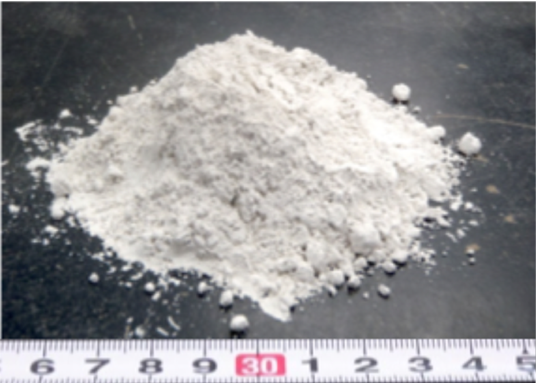Reviewed by Lexie CornerMay 30 2025
In a recent development in sustainable construction, Japanese researchers have created a cement-free soil solidifier using industrial waste. The findings were published in the Cleaner Engineering and Technology journal on May 1, 2025.
The team used Siding Cut Powder (SCP) and Earth Silica (ES) - an alkaline stimulant derived from recycled glass - to produce a material with compressive strength above 160 kN/m². The solidifier also includes calcium hydroxide for arsenic stabilization. This approach aims to reduce landfill waste and carbon emissions by offering a more sustainable option for infrastructure projects.
 Alkaline stimulant, also referred to as Earth Silica, when combined in calculated proportions with Siding Cut Powder, significantly improves soil compressive strength, exceeding the construction-grade threshold of 160 kN/m2. Image Credit: Professor Shinya Inazumi from SIT, Japan
Alkaline stimulant, also referred to as Earth Silica, when combined in calculated proportions with Siding Cut Powder, significantly improves soil compressive strength, exceeding the construction-grade threshold of 160 kN/m2. Image Credit: Professor Shinya Inazumi from SIT, Japan
As urbanization increases, construction activity places growing pressure on natural resources and the environment. Ordinary Portland Cement remains the most widely used soil solidifier, despite its substantial carbon footprint.
Meanwhile, construction waste continues to accumulate in landfills. Reducing the environmental impact of cement use and improving industrial waste management are key concerns.
To address these issues, scientists from Japan, led by Professor Shinya Inazumi of the College of Engineering at Shibaura Institute of Technology (SIT), developed a geopolymer-based soil solidifier using SCP, a byproduct of construction waste, and ES from recycled glass.
This method offers a potential alternative to cement-based solidifiers and reuses waste materials in construction. The SCP-ES combination produces a geopolymer solidifier that meets soil compressive strength requirements for construction, exceeding 160 kN/m².
Thermal treatment of SCP at 110 and 200 °C was essential in improving its reactivity and reducing the amount of material needed without compromising performance.
This research represents a significant breakthrough in sustainable construction materials. By using two industrial waste products, we developed a soil solidifier that not only meets industry standards but also helps address the dual challenges of construction waste and carbon emissions.
Shinya Inazumi, Professor, Shibaura Institute of Technology
The study addressed environmental safety concerns, particularly the potential for arsenic leaching linked to the recycled glass content in Earth Silica. Researchers incorporated calcium hydroxide into the mixture to stabilize arsenic and reduce leaching risks.
Inazumi added, “Sustainability cannot come at the expense of environmental safety. Most importantly, we identified and solved a potential environmental concern: when arsenic leaching was detected in initial formulations, we demonstrated that incorporating calcium hydroxide effectively mitigated this issue through the formation of stable calcium arsenate compounds, ensuring full environmental compliance.”
This solution offers several practical applications relevant to real-world construction needs.
“In urban infrastructure development, our technology can stabilize weak soils beneath roads, buildings, and bridges without relying on carbon-intensive Portland cement. This is particularly valuable in areas with problematic clay soils where conventional stabilization methods are costly and environmentally burdensome,” Inazumi added.
Disaster-prone areas could benefit from the rapid soil stabilization enabled by these materials, which exhibit favorable workability and setting times suitable for emergency response scenarios. In addition, rural infrastructure projects in developing countries could use the materials to produce stabilized soil blocks for construction, offering a lower-carbon alternative to burnt bricks or conventional concrete.
The potential applications span multiple sectors. In the building industry, which faces growing pressure to reduce emissions, the geopolymer solidifier presents an option with a lower carbon footprint than conventional methods. Its demonstrated resistance to sulfate attack, chloride ingress, and freeze-thaw cycles also makes it suitable for use in demanding geotechnical environments.
By reducing the need for Portland cement, this approach supports efforts to meet green building standards and carbon reduction targets. It may also help developers qualify for environmental incentives in countries with carbon pricing policies, improving its overall economic viability.
Professor Inazui emphasized the broader objective behind his work: “By developing a geopolymer solidifier from readily available waste streams, we are not only offering a sustainable engineering solution but redefining how we value industrial byproducts in a resource-constrained world.”
These findings suggest a potential shift in sustainable construction practices. They offer a way to repurpose large volumes of construction waste while reducing the carbon emissions linked to cement production, which currently contributes approximately 7–8 % of global CO₂ emissions.
As infrastructure demand continues to grow, the development of alternative technologies will play an important role in supporting more resource-efficient and environmentally conscious construction methods.
Journal Reference:
Inazumi, S., et al. (2025). Development of environmentally sustainable geopolymer-based soil solidifiers using waste siding and glass powders. Cleaner Engineering and Technology. doi.org/10.1016/j.clet.2025.100976.